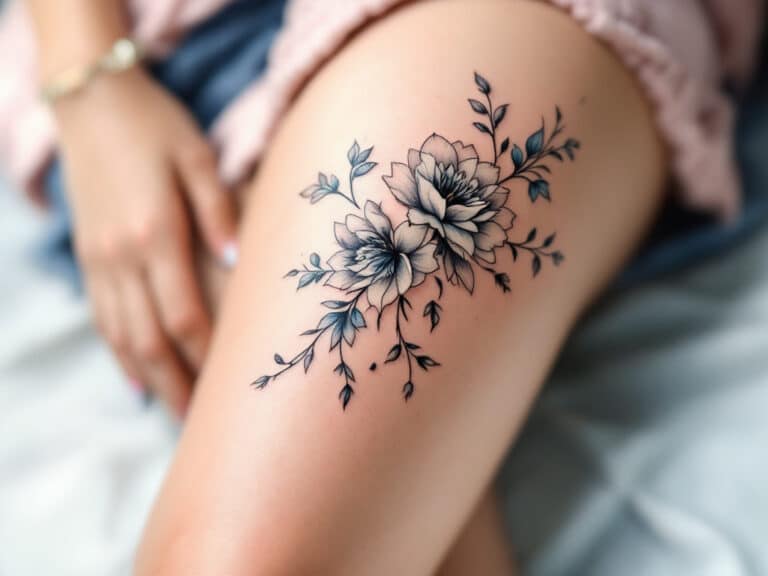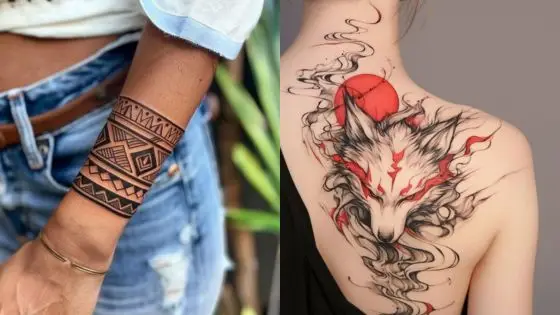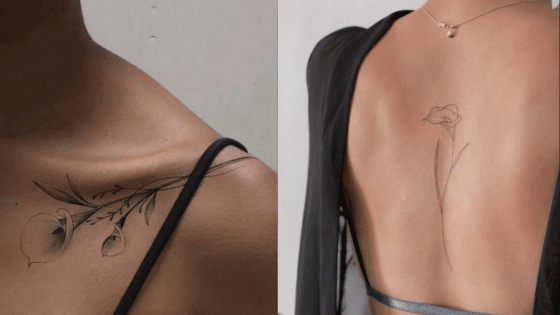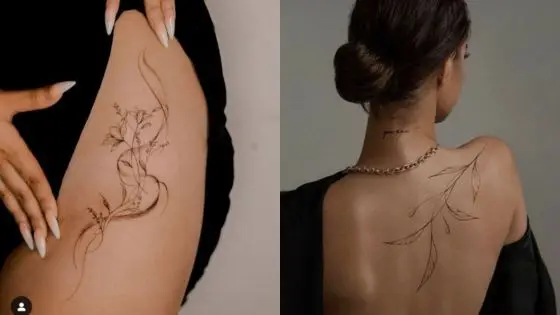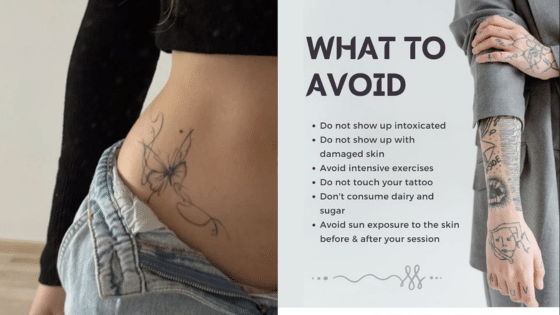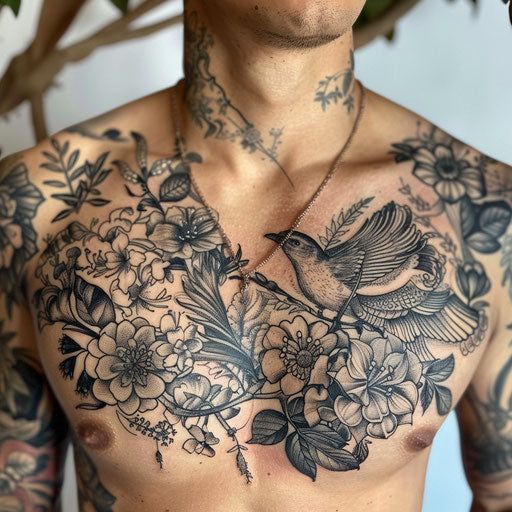
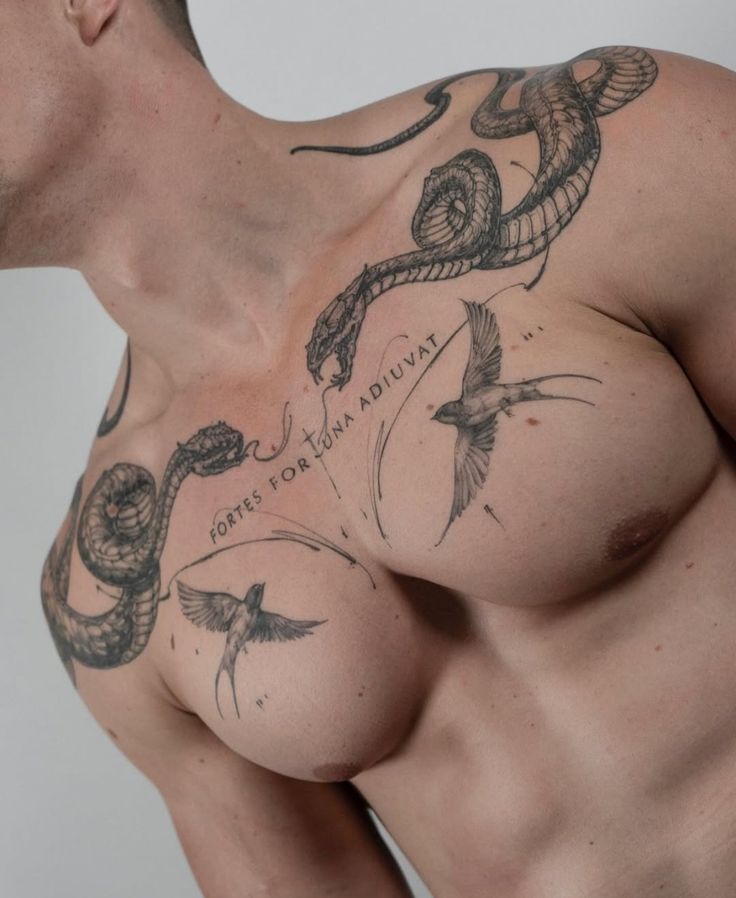
Chest tattoos are a popular choice for those looking to make a bold statement or carry meaningful art close to their heart. They offer a large canvas for both simple and detailed designs, making them versatile for many styles. The chest is a prime spot because it allows for impactful tattoos that can be easily shown or hidden.
Getting a chest tattoo involves understanding the pain, design options, and care needed to keep the tattoo looking its best. Both men and women choose chest tattoos for personal reasons and style preferences. Deciding on the right design and artist is key to a good outcome.
Whether someone wants a small symbol or a full chest piece, knowing what to expect will help during the process. Taking care of a chest tattoo properly can also make a big difference in how it heals and ages over time.
Key Takeaways
- Chest tattoos offer a large area suitable for many design ideas.
- Proper care and choosing the right artist are important for good results.
- Pain and healing are key factors to consider before getting a chest tattoo.
What Are Chest Tattoos?
Chest tattoos cover a wide area on the upper body, making them a popular choice for big and detailed designs. They can show different styles and meanings depending on the person’s taste and culture.
Defining Chest Tattoos
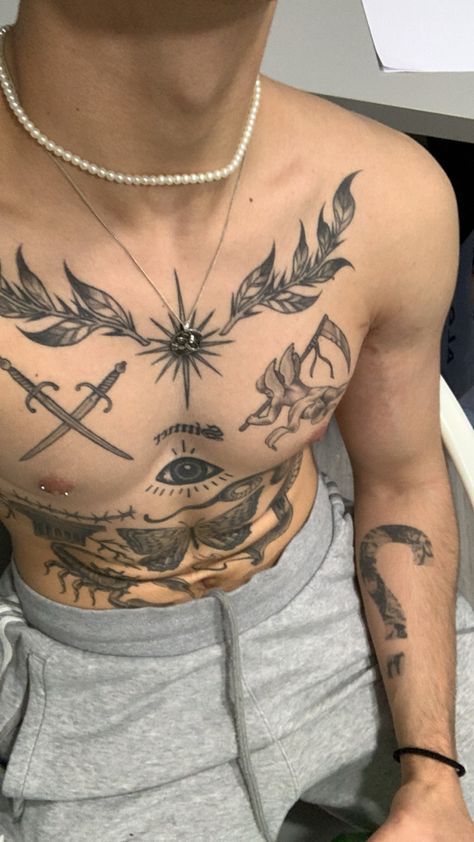
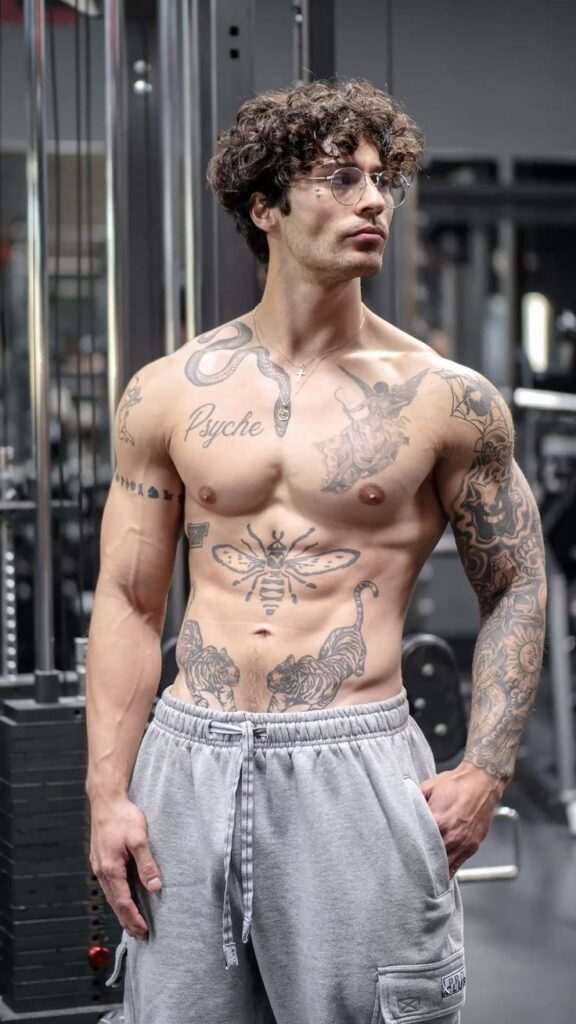
Chest tattoos are ink designs placed anywhere on the chest area. This includes the skin over the pectoral muscles and sometimes extends to the shoulders or collarbones. The size can vary from small symbols to full chest pieces.
The chest is a flat but flexible area, which allows for many different tattoo styles. Because of its size, the chest is often chosen for detailed and larger tattoos. It’s an area that can be easily covered or shown depending on clothing.
Distinctive Features
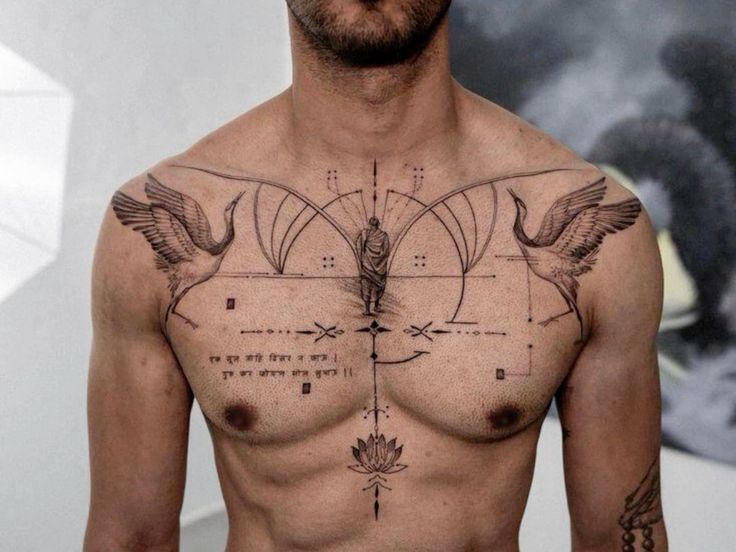
Chest tattoos stand out because of their size and visibility when exposed. The chest holds a lot of movement, so designs here need to flow well with the body’s shape.
Pain can be higher near the collarbones and sternum due to thin skin and bone. The flexibility of this area also affects how the tattoo ages and moves with the skin over time.
Many prefer symmetrical tattoos on the chest because it aligns with the body’s center. Designs can be bold or subtle, but the chest gives space for creativity that few other body parts offer.
Symbolic Meanings


Chest tattoos often symbolize strength, courage, or protection because of their location near the heart. Some choose chest tattoos to represent personal values or important life events.
They may also have spiritual or cultural meanings. For example, some tribal tattoos on the chest tell stories or show family history.
The chest’s closeness to the heart can make tattoos there feel very personal. Many people select meaningful images that connect with their identity or emotional experiences.
Popular Chest Tattoo Designs
Chest tattoos often feature bold symbols, modern imagery, cultural patterns, or unique personal art. Many people choose designs that fit their style, tell a story, or show their heritage. The chest provides a large, flat space, making it ideal for detailed and striking tattoos.
Classic Motifs
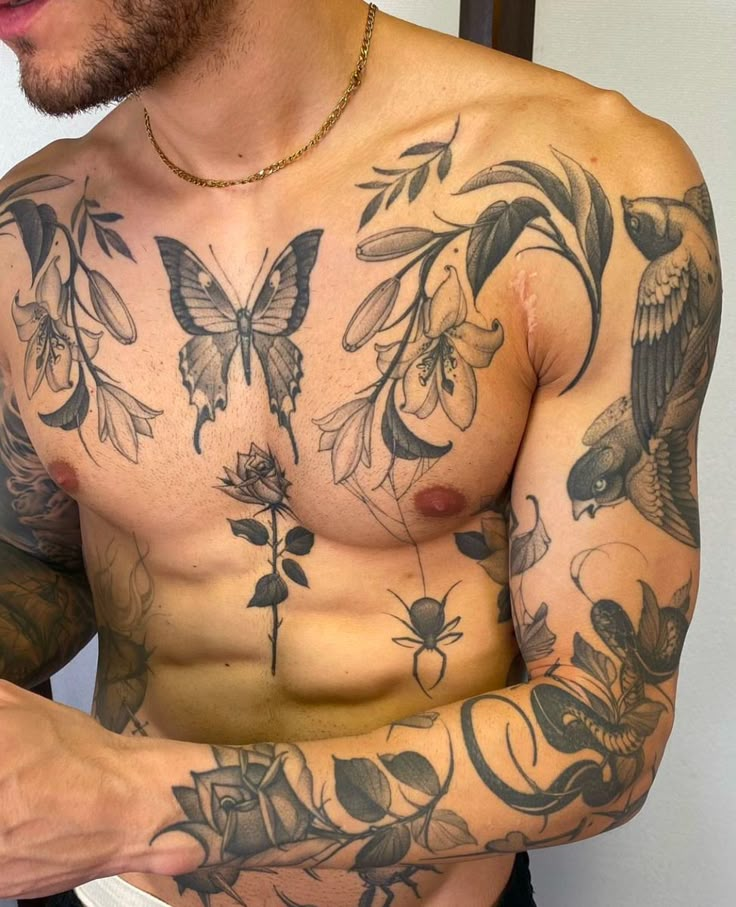
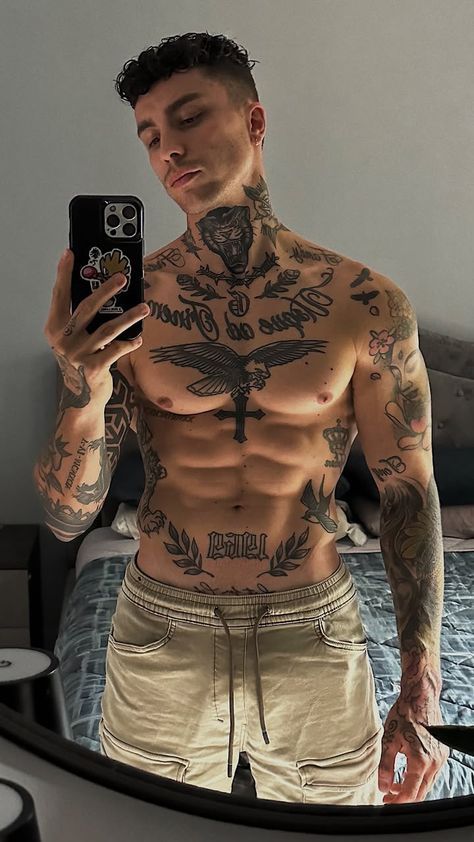
Classic chest tattoos include eagles, skulls, roses, anchors, and hearts. These symbols have long histories and clear meanings. For example, eagles often represent freedom and strength. Skulls can symbolize mortality or rebellion.
Traditional styles use bold lines and simple colors, usually black or red. The classic approach appeals to those who want timeless looks. These designs are often symmetrical and centered on the chest for balance.
Modern Trends
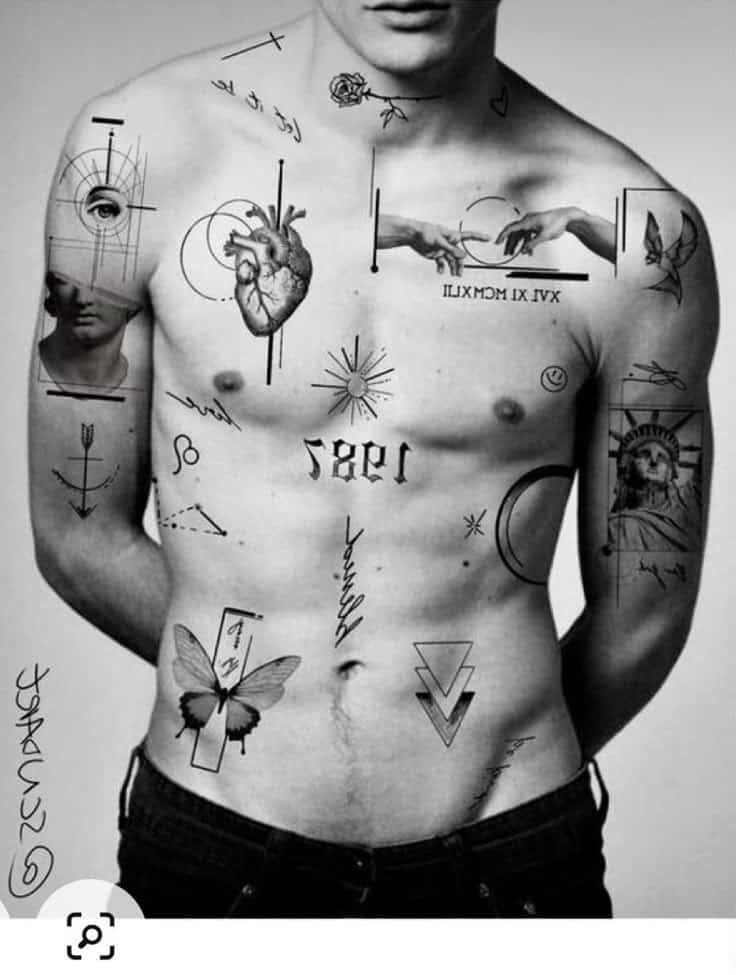
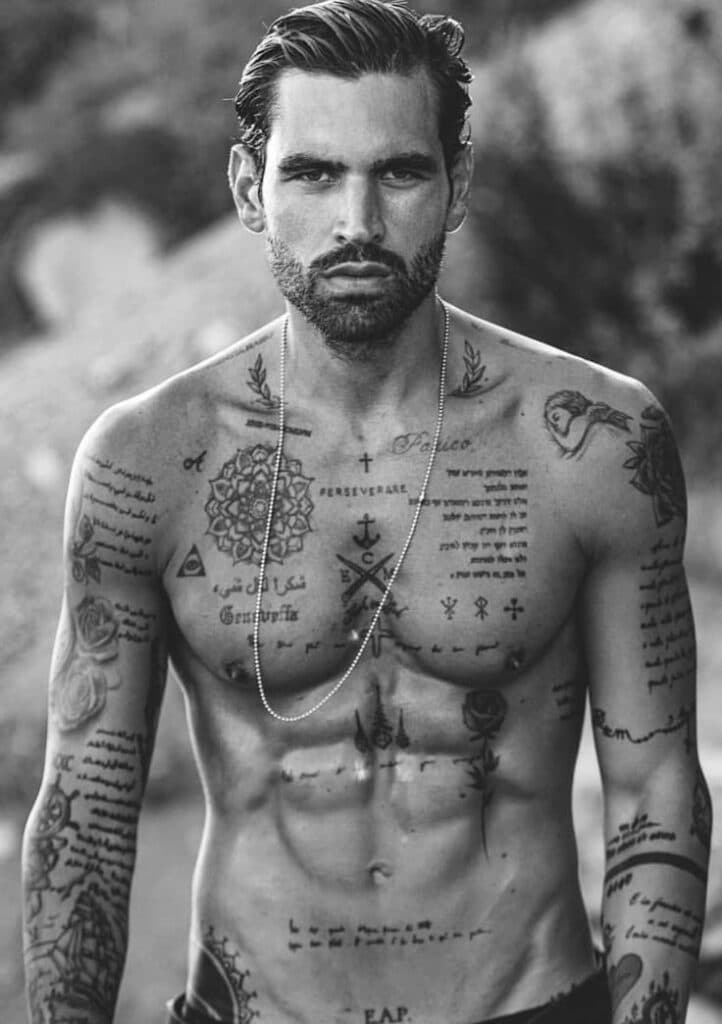
Modern chest tattoos mix styles, like geometric shapes, abstract art, and realistic portraits. Many use fine details and shading for depth. Popular designs include animals, faces, and nature scenes, often with bright colors.
Minimalist line work is also common. It focuses on thin, clean lines without shading. This trend suits those who want subtle but meaningful chest tattoos.
Cultural Influences
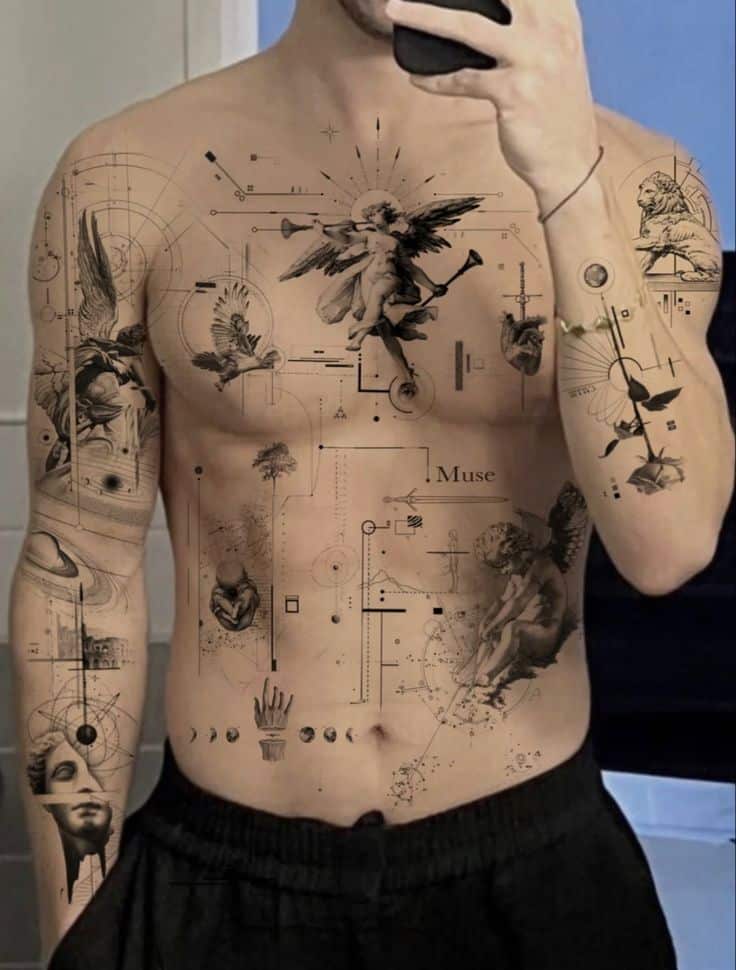
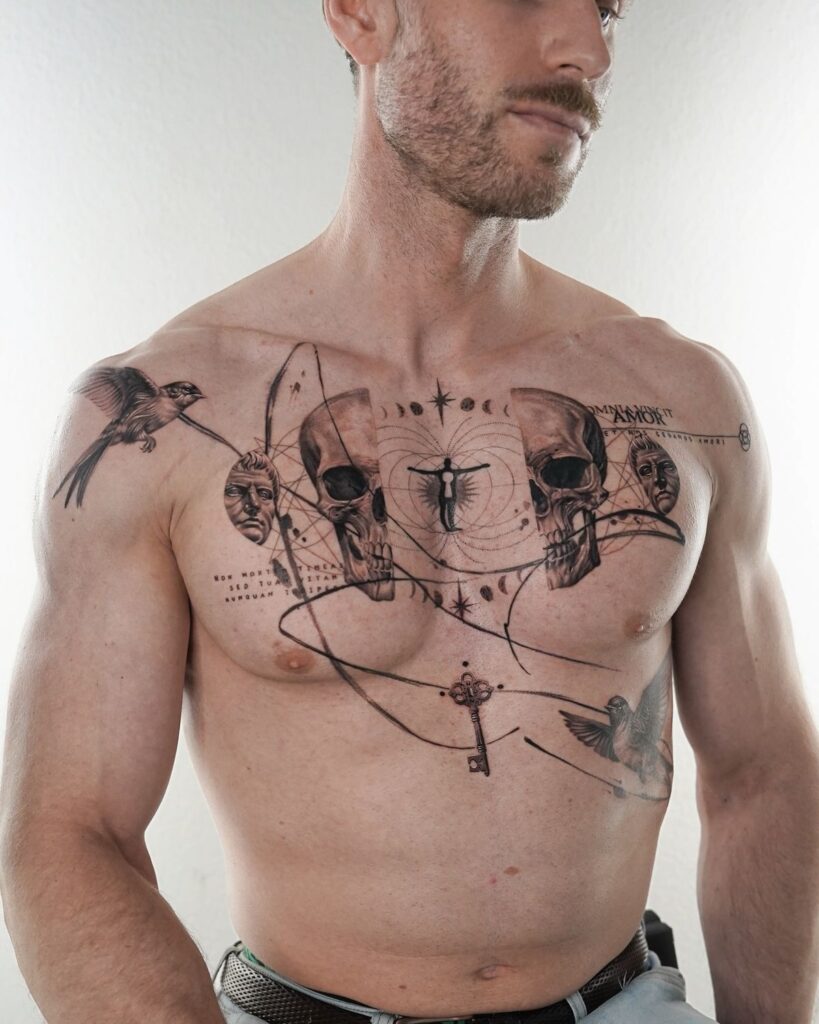
Many chest tattoos are inspired by cultural art. Polynesian tribal patterns are popular for their symbolism and flow. These designs use repeated shapes that follow body lines.
Japanese chest tattoos often include dragons, koi fish, and cherry blossoms. These elements carry deep meanings, such as courage and life’s beauty. Cultural tattoos can honor one’s roots or show respect for different traditions.
Personalized Artwork
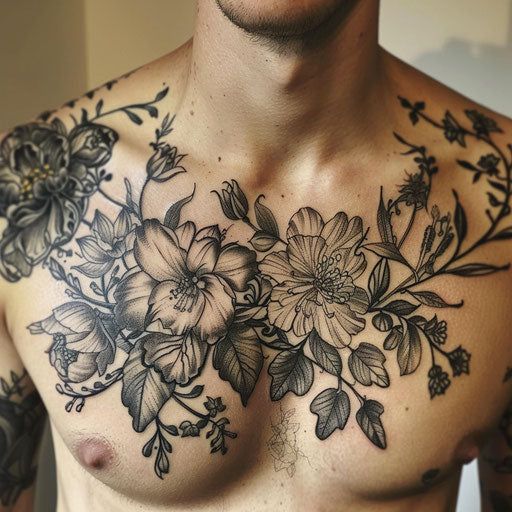
Some people choose chest tattoos that tell a personal story. This can be names, dates, or images that symbolize important life events. Custom designs combine styles and symbols to create unique art.
Artists work closely with clients to match the tattoo to their personality. These tattoos often mix color, text, and images to make a one-of-a-kind piece. Personalization ensures the tattoo remains meaningful over time.
Choosing the Right Chest Tattoo
Deciding on a chest tattoo requires careful thought about where it will sit, how big it should be, and what design fits best. Each choice affects how the tattoo looks and how comfortable it feels during and after the process.
Placement Considerations
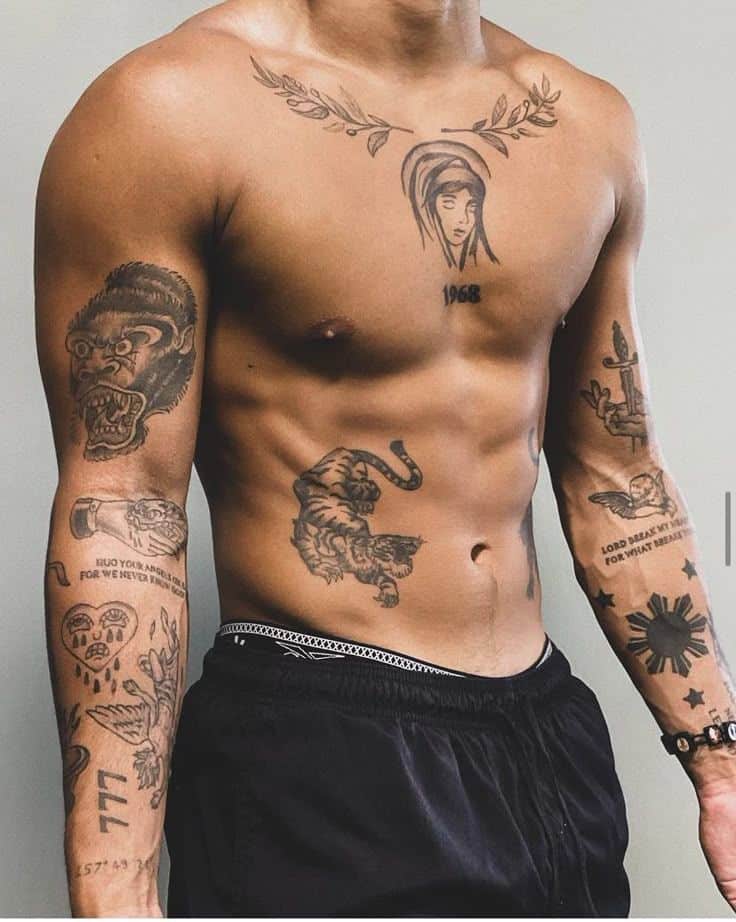
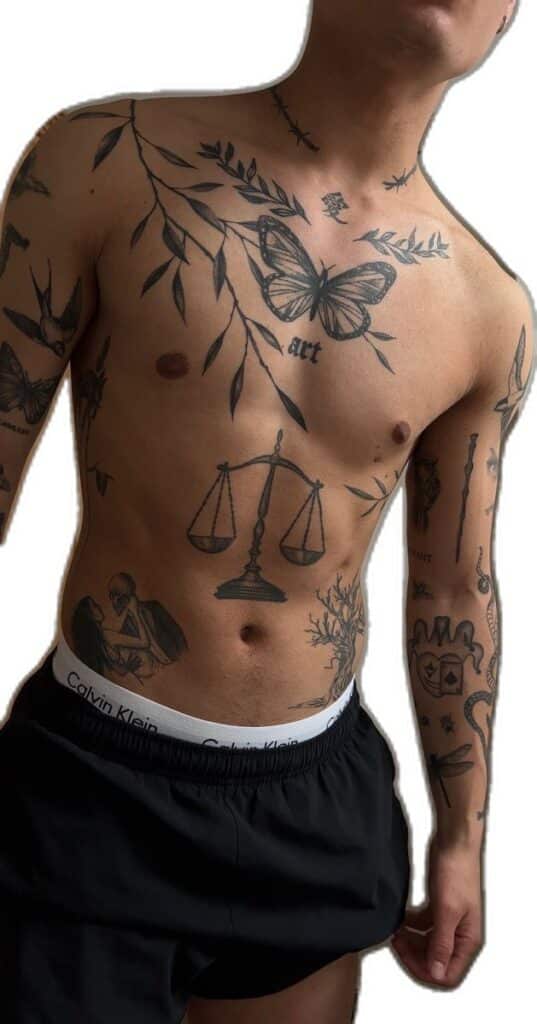
Placement is key when choosing a chest tattoo. The chest area is broad, but the tattoo should complement the body’s shape. Some prefer the center of the chest, while others opt for one side, near the collarbone or across the pectoral muscle.
Skin flexibility and muscle movement affect how a tattoo ages on the chest. Areas close to bones may hurt more during inking. If a person works out a lot, the tattoo might stretch or distort with muscle growth.
Size and Scale
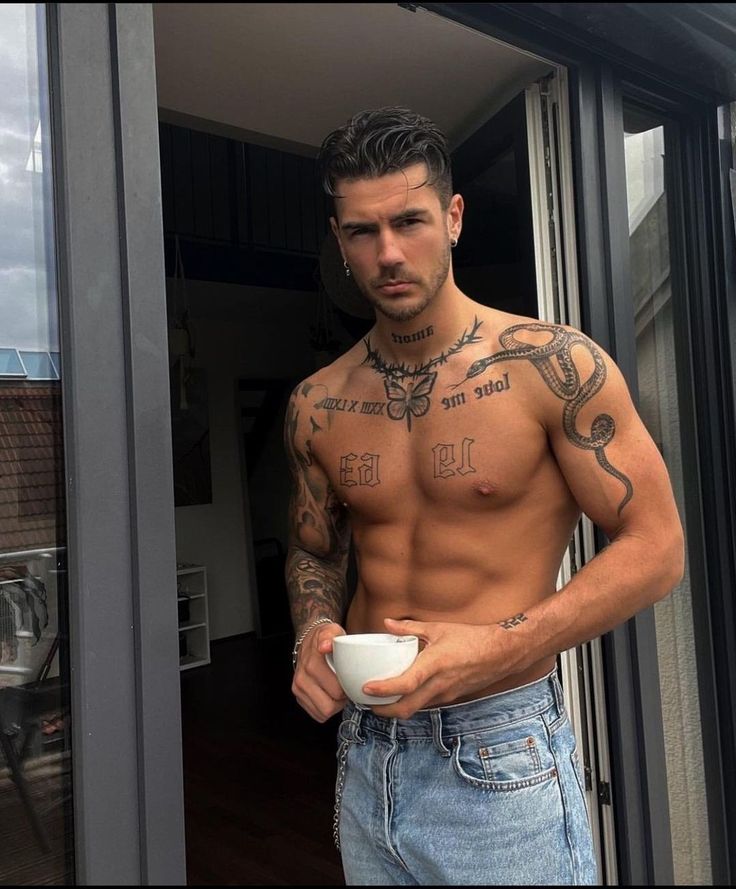
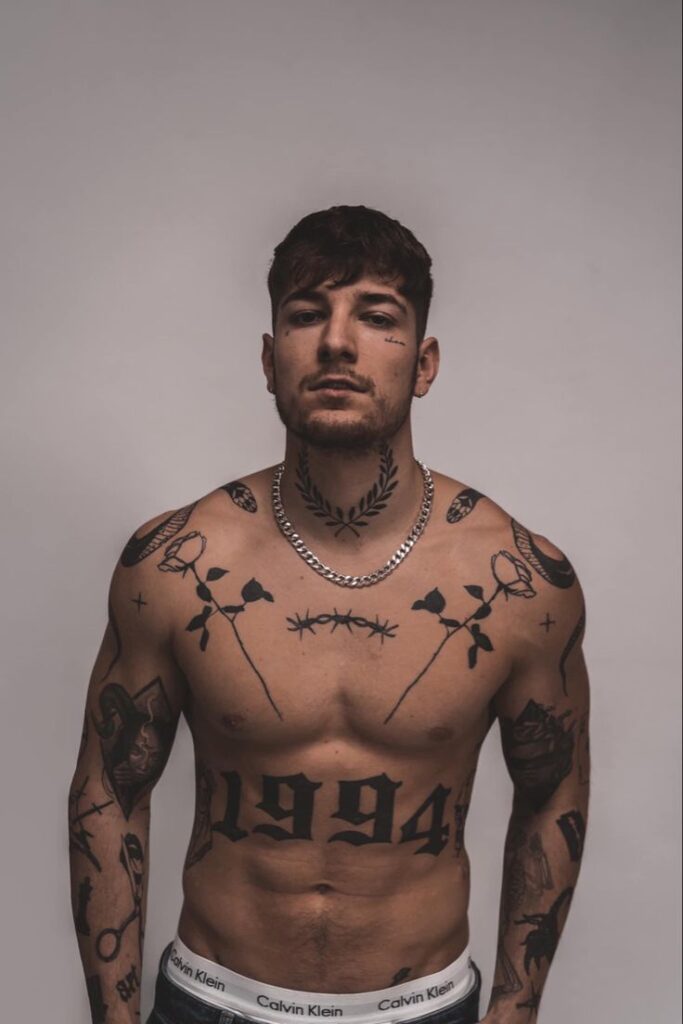
The size of a chest tattoo depends on the design and personal style. Small tattoos can look sharp and simple, while larger pieces can create a dramatic effect that covers the entire chest.
Large tattoos require more time, money, and healing care. The scale should fit the natural curves of the chest. A well-proportioned tattoo flows with the muscles to avoid discomfort or odd shapes.
Design Consultation
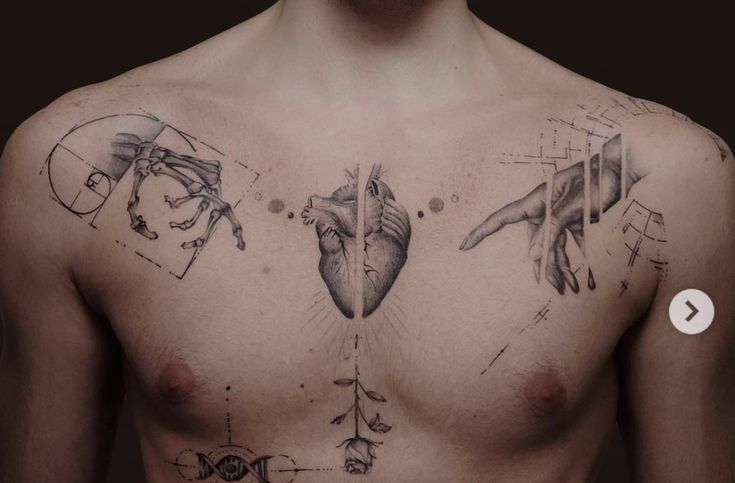
A design consultation with a tattoo artist is a must. It helps tailor the tattoo to the person’s body, ensuring the design fits well and suits skin tone and texture.
During consultation, the artist advises on details like line thickness, shading, and color use. The person should bring reference images and be open to expert feedback to get the best result.
Pain and the Tattooing Process
Chest tattoos can cause different levels of pain depending on the area. The tattooing process involves needles injecting ink into the skin, which can irritate sensitive spots. Preparation and healing time also affect how the experience feels.
Pain Levels by Area
The chest has areas with varying pain sensitivity. The skin over the ribs and collarbone is thinner and close to bone, which usually causes higher pain. The center of the chest, where there is more muscle and fat, tends to be less painful.
Pain often increases with the size and detail of the tattoo. Large or highly detailed chest tattoos mean longer sessions, which can lead to more discomfort. Every person’s pain tolerance is different, so reactions may vary widely.
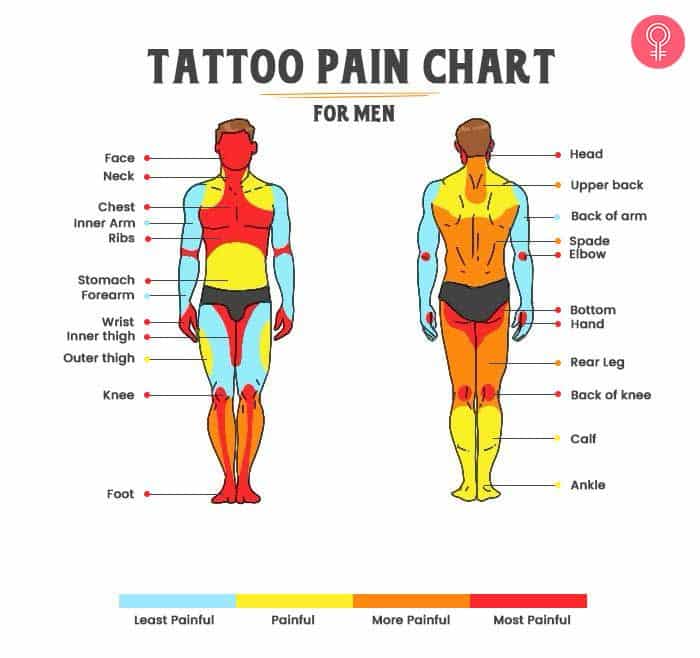
Preparation and Numbing Options
Proper preparation can reduce some pain during the tattoo. This includes staying hydrated, resting well, and avoiding alcohol or caffeine. Some people use numbing creams, but these should be approved by the tattoo artist to avoid interfering with the ink.
Tattoo artists may use ice or cold packs on the skin before starting. This can help numb the area naturally. However, deep or complex work may still cause discomfort even with numbing methods.
Healing Stages
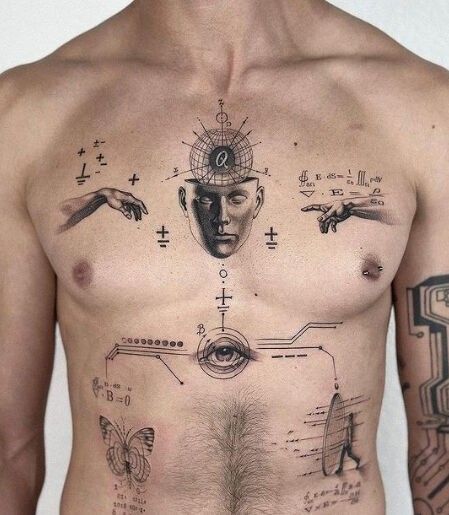
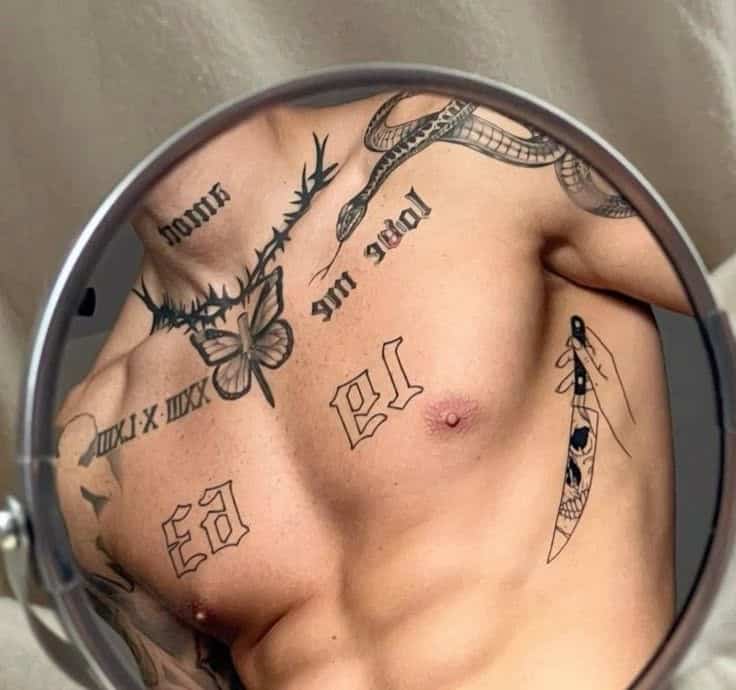
The healing process for chest tattoos takes about two to four weeks. At first, the area will be red and swollen. Some itching and peeling may happen as the skin heals.
Keeping the tattoo clean and moisturized is important. Avoid tight clothing that rubs the tattoo to prevent extra pain or damage. Healing discomfort usually lessens after the first week and should stop as the skin recovers.
Aftercare for Chest Tattoos
Proper care after getting a chest tattoo is key to healing and keeping the design clear. It involves cleaning, protecting, and avoiding certain activities to prevent damage or infection.
Immediate Post-Tattoo Care
Right after getting a chest tattoo, the area will be raw and sensitive. The artist usually covers it with a bandage or plastic wrap. This should stay on for the first 2 to 4 hours to protect the skin from germs.
After removing the covering, gentle washing with lukewarm water and mild, fragrance-free soap is important. Pat dry with a clean towel—don’t rub. Applying a thin layer of tattoo aftercare balm or unscented lotion helps keep the skin moist.
It’s best to avoid tight clothing over the tattoo during this stage to prevent irritation. Also, avoid scratching or picking at the tattoo as it heals.
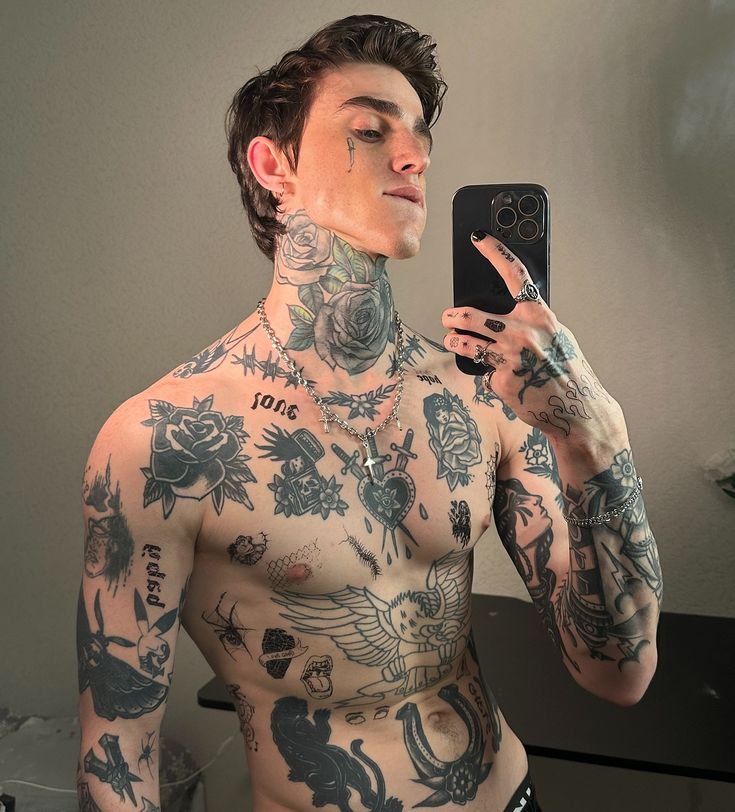
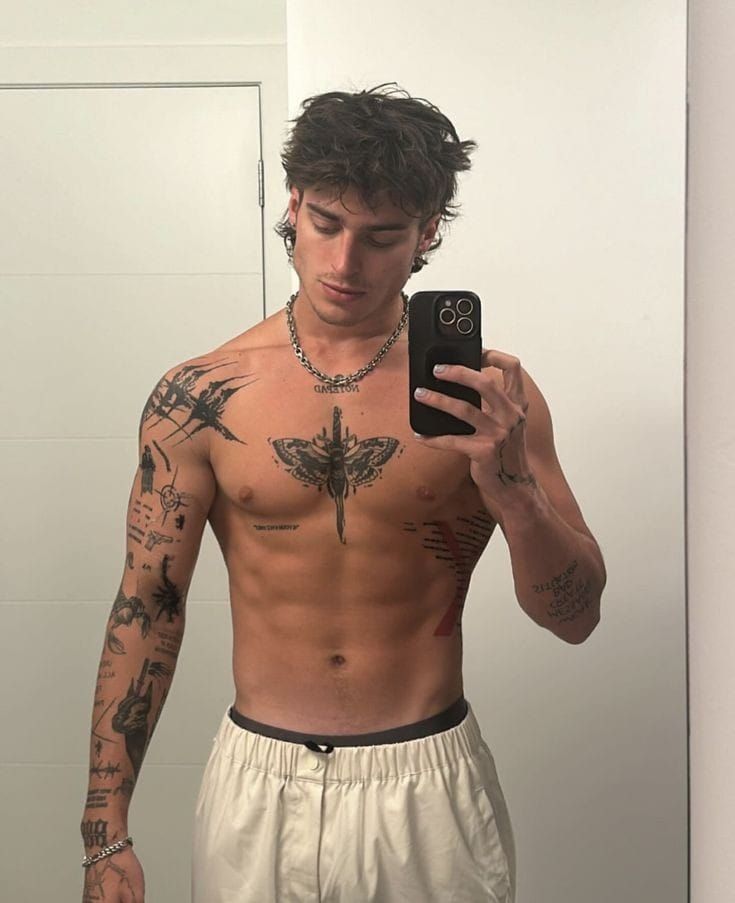
Long-Term Maintenance
Once the tattoo starts healing, daily moisturizing will keep the skin healthy. Using a fragrance-free lotion helps prevent dryness and cracking.
Keeping the tattoo out of direct sunlight protects the ink from fading. If going outside, applying a broad-spectrum sunscreen with at least SPF 30 is advised once the tattoo is fully healed.
Wearing loose clothing supports comfort and reduces rubbing on the tattooed area. Hydration also helps skin stay supple.
Regularly checking for signs of infection or unusual changes ensures the tattoo stays safe and healthy.
Avoiding Common Issues
Infections are a common problem if care is not followed. Redness, swelling, or pus require medical attention. Proper hygiene and using clean hands when touching the tattoo reduce this risk.
Allergic reactions can occur if harsh soaps or fragranced lotions are used. Sticking to gentle, recommended products prevents this.
Excessive sun exposure can cause fading and skin damage. Avoid tanning beds and direct sunlight during the healing process.
Lastly, doing heavy exercise or activities that cause excessive sweating can slow healing. Taking breaks from these helps the tattoo heal properly.
Chest Tattoos for Men and Women
Chest tattoos can vary widely depending on personal style and body shape. Choices about design, placement, and details often differ between men and women to suit their preferences and anatomy.
Design Preferences by Gender

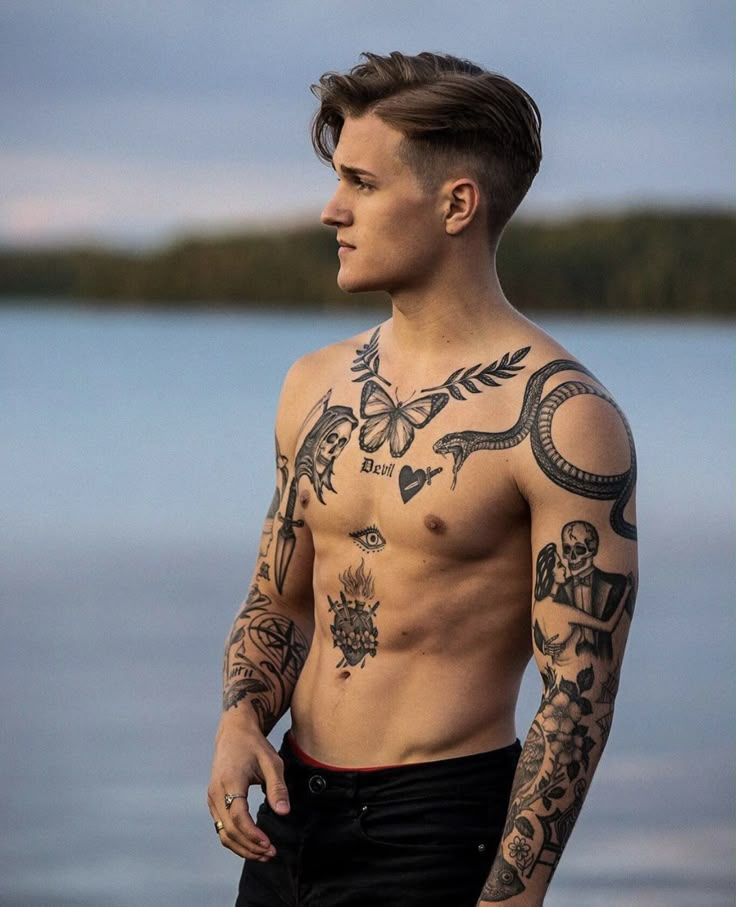
Men often choose bold, large-scale designs such as animals, skulls, or tribal patterns. These usually cover the entire chest or extend to the shoulders. Darker inks and strong lines are common to create a powerful look.
Women may prefer smaller, delicate designs like flowers, birds, or meaningful symbols. These tattoos often highlight curves and leave more open space. Soft shading and fine details are popular to add elegance and subtlety.
Both genders value tattoos that tell a story or represent personal meaning. The choice of color and style is tailored to express identity clearly.
Unique Placement Ideas
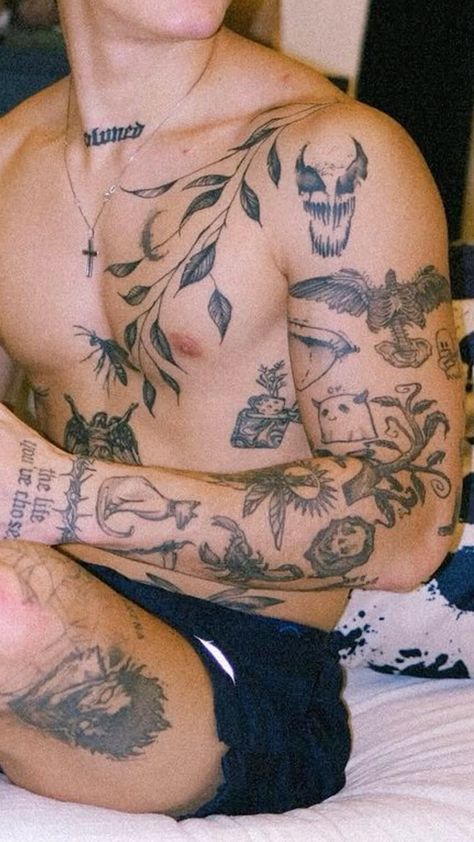
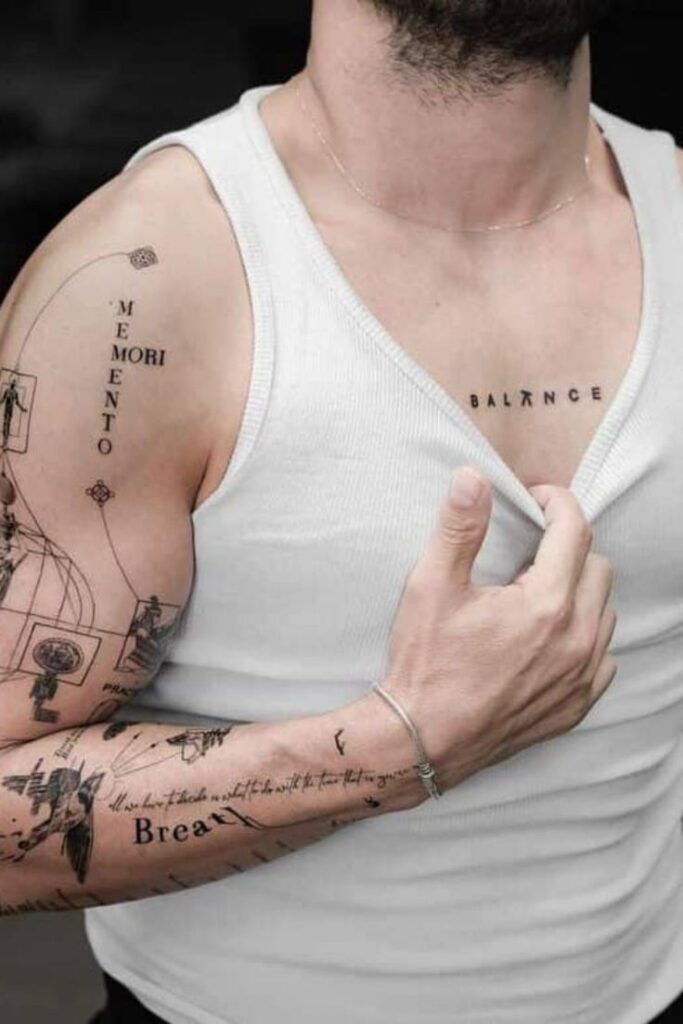
Men typically place tattoos across the upper chest, covering the pectoral muscles, or spreading from the collarbone down toward the ribs. Centerpieces, like a heart or compass, are common.
Women might choose tattoos on the side of the chest near the clavicle or over the breast area. These spots can be hidden or revealed depending on clothing.
Some opt for asymmetric designs, placing art on one side of the chest, giving a modern and distinct look. Others prefer symmetrical designs that balance both sides evenly.
Customization Tips
Personalizing a chest tattoo starts with choosing elements that reflect personal beliefs or experiences. Combining text with images can add meaning.
Size matters; a larger tattoo needs detailed planning to maintain clarity. A smaller tattoo should focus on simple, clean lines to avoid blurring over time.
Discussing pain tolerance helps decide placement. Some areas on the chest are more sensitive, so gradual sessions might be necessary.
Working with an experienced tattoo artist ensures the design fits well with body shape and tone. Custom colors and shading bring uniqueness to every piece.
Cover-Ups and Tattoo Removal on the Chest
Cover-ups and tattoo removal on the chest often involve careful planning and specific techniques. The process depends on the tattoo’s size, color, and location. People choose these options for many reasons, and the results vary based on method and skin type.
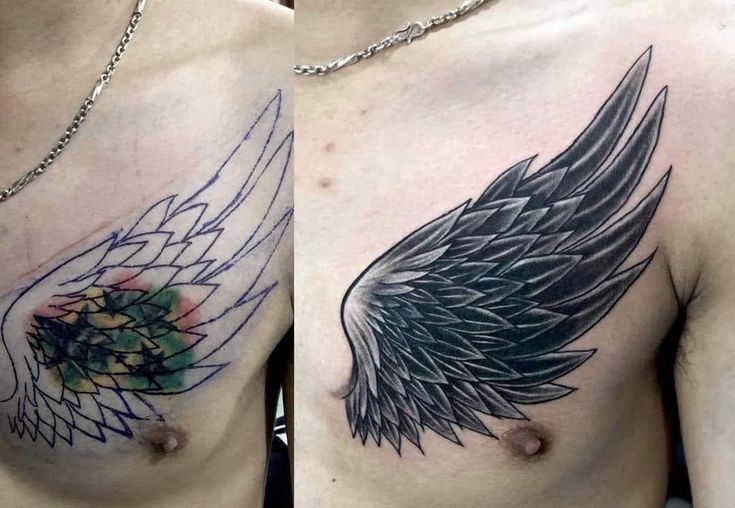
Reasons for Cover-Ups
Many choose cover-ups to change a tattoo they no longer like. Some want to hide old or faded tattoos that do not look good anymore.
Others cover tattoos because of lifestyle changes such as new jobs or personal growth. Family or cultural reasons also play a part.
Cover-ups can be cheaper and less painful than full removal. They help avoid scars that can appear after removal.
Techniques Available
Tattoo cover-ups often use darker or larger designs to hide the old tattoo. Artists create new images that blend well with the original ink.
Laser tattoo removal breaks down ink particles using light energy. It usually needs several sessions and may cause redness or swelling.
Other options include dermabrasion, which sands the skin, or surgical removal for small tattoos. These methods can leave scars.
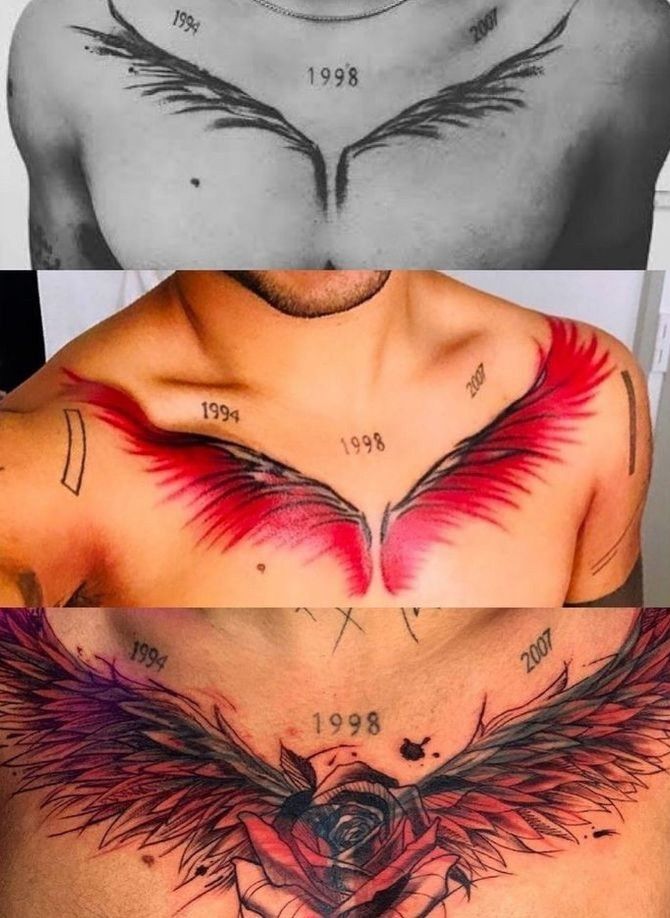

Limitations and Expectations
Cover-ups cannot make old tattoos disappear completely. The new design must be bigger or darker for full coverage.
Laser removal depends on ink colors; black ink is easier to remove than green or blue. Multiple treatments are needed.
Complete removal is rare, and some skin damage may occur. Results depend on skin type, tattoo age, and removal method.
Finding the Right Tattoo Artist
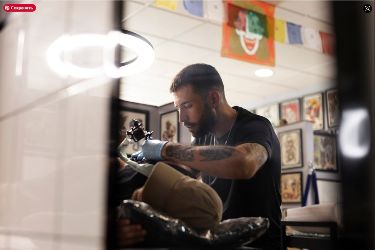
Choosing the right tattoo artist is very important for a chest tattoo. The chest is a large area with curves, so skill and experience matter a lot. A good artist can create a design that fits the shape of the chest well.
People should start by looking at portfolios. Most artists share pictures of their work online. They can check for clean lines, smooth shading, and clear details. These show the artist’s ability.
It helps to find an artist who specializes in chest tattoos or similar styles. Not every tattoo artist works well with big, flat areas. Some may focus more on small or simple tattoos.
Before deciding, reading reviews can give insight into the artist’s professionalism and cleanliness. Comfort is also key. The client should feel at ease asking questions and sharing ideas.
Here is a simple list to consider:
- Experience with chest tattoos
- Portfolio quality
- Clean and safe studio
- Positive reviews
- Good communication skills
Matching the artist’s style with the desired tattoo design is essential. An experienced artist listens and helps improve the idea, making the tattoo look better on the chest.
Chest Tattoo Costs and Budgeting
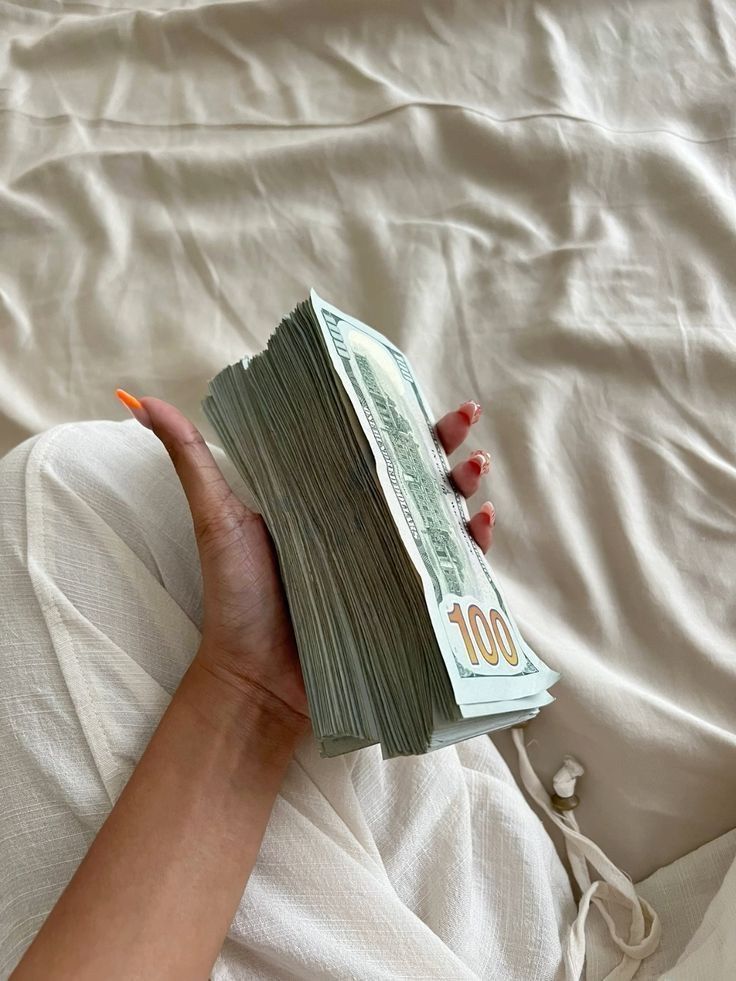
The cost of a chest tattoo depends on size, detail, and the artist’s experience. Larger tattoos cover more skin and take longer, so they cost more.
Artists usually charge by the hour. Hourly rates can range from $100 to $300 or more, depending on the shop and location.
Here is a simple cost guide:
| Tattoo Size | Estimated Cost |
|---|---|
| Small (few inches) | $150 – $400 |
| Medium (half chest) | $400 – $1,000 |
| Large (full chest) | $1,000 – $3,000+ |
People should also budget for tips, usually 15%-20% of the total price.
Some shops may ask for a deposit before starting. This deposit holds the appointment and is often part of the final price.
Planning the design ahead helps avoid extra sessions and costs. More detailed tattoos need longer visits or multiple appointments.
It’s smart to set aside extra money for touch-ups later. Tattoos may fade or need small fixes.
Budgeting carefully ensures the tattoo fits both their artistic goals and wallet.
Potential Risks and Safety Precautions

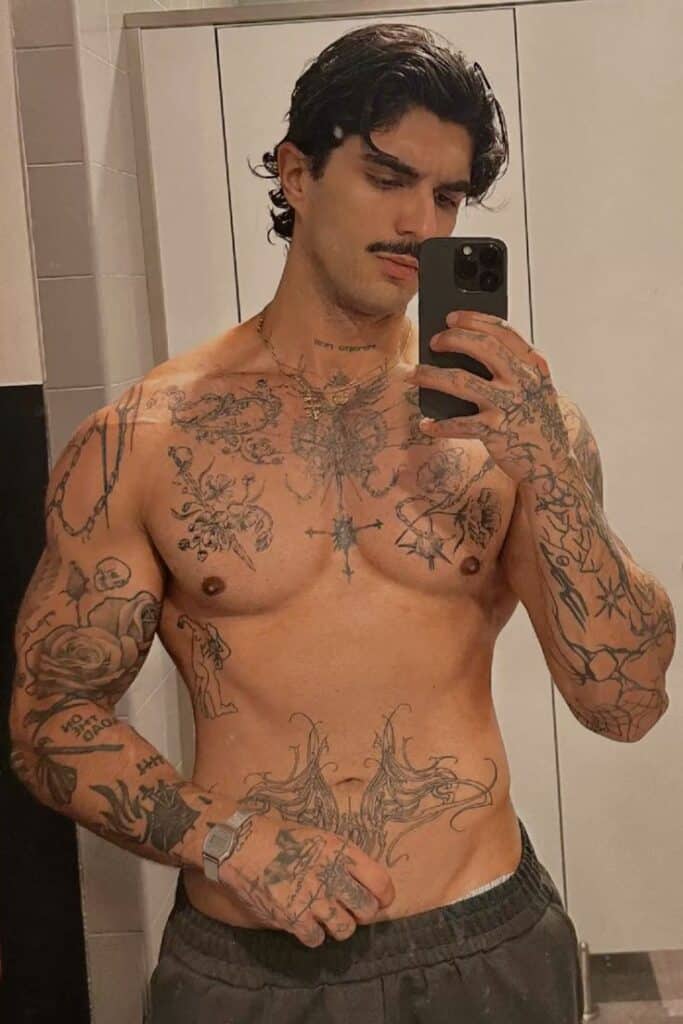
Chest tattoos carry some risks like any tattoo. The skin on the chest can be sensitive, which might cause more pain or irritation during the process.
Infection is a common risk. The tattoo needle breaks the skin, so using clean equipment and proper aftercare is important to prevent bacteria from entering.
Allergic reactions to ink can happen. Some people may develop redness, swelling, or itching after getting a chest tattoo. Testing for allergies beforehand is a good idea.
Healing times vary, but the chest area can take longer to heal due to movement and clothing rubbing on it. Keeping the tattoo clean and moisturized helps reduce complications.
Safety tips to consider:
- Choose a licensed and experienced tattoo artist.
- Make sure the studio follows hygiene rules.
- Avoid exposing the fresh tattoo to direct sunlight.
- Wear loose clothing to prevent irritation.
- Follow aftercare instructions carefully.
| Potential Risk | Description | Precaution |
|---|---|---|
| Infection | Redness, pain, pus | Clean tools, proper aftercare |
| Allergy | Itching, swelling | Patch test before tattooing |
| Healing issues | Prolonged healing, scabbing | Keep tattoo moisturized, clean |
| Skin irritation | Pain from rubbing clothing | Wear loose clothes |
Following these precautions can help reduce problems and promote proper healing.
Longevity and Aging of Chest Tattoos
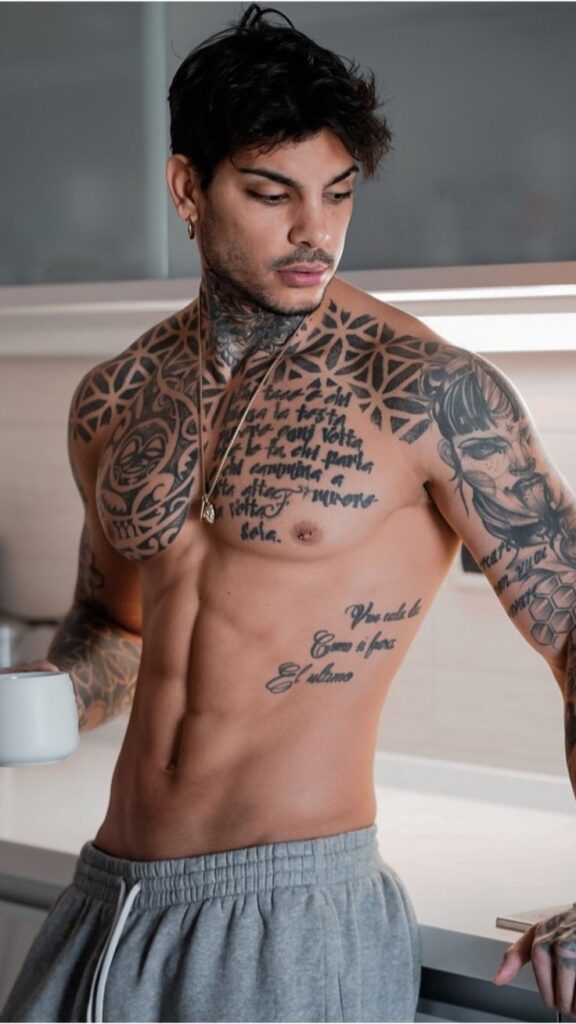
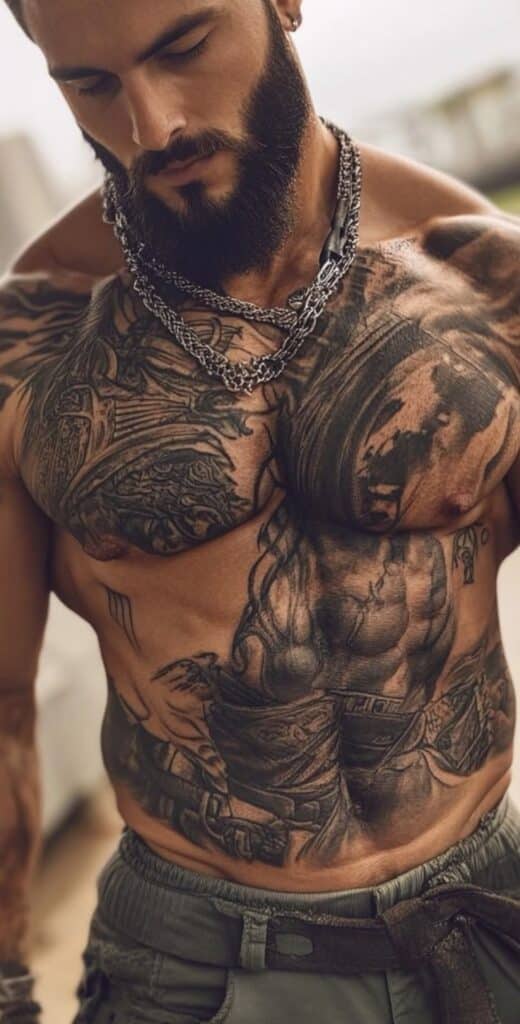
Chest tattoos tend to age differently than tattoos on other parts of the body. The skin on the chest is thicker and less exposed to sunlight, which can help the ink stay clearer for longer.
However, chest tattoos can still fade over time. Factors like sun exposure, skin type, and tattoo care play important roles in how well the design holds up.
Aging can cause tattoos to blur or lose sharp lines. Weight changes, muscle growth, and stretching of the skin also affect how the tattoo looks after years.
| Factor | Effect on Tattoo Longevity |
|---|---|
| Sun Exposure | Causes fading and color loss |
| Skin Elasticity | Stretching can distort the design |
| Ink Quality | Higher quality ink lasts longer |
| Tattoo Care | Proper care helps maintain sharpness |
Regular moisturizing keeps the skin healthy and can slow down fading. Using sunscreen on chest tattoos when exposed to sunlight is important to protect color.
Touch-ups may be needed after several years to restore clarity. People with chest tattoos should expect some changes but can keep them looking good with good care.
- 866shares
- Facebook0
- Pinterest863
- Twitter3
- Reddit0









